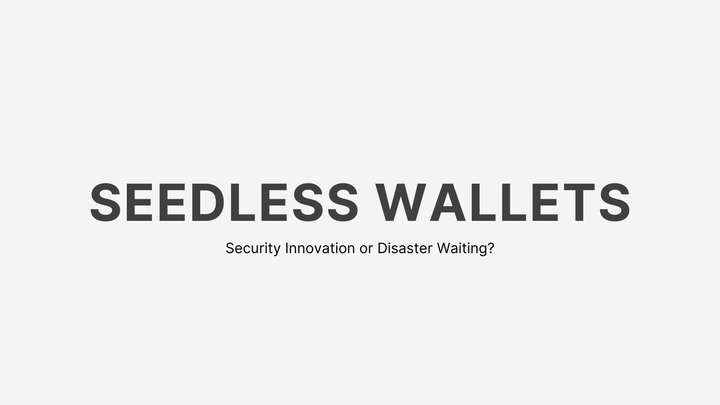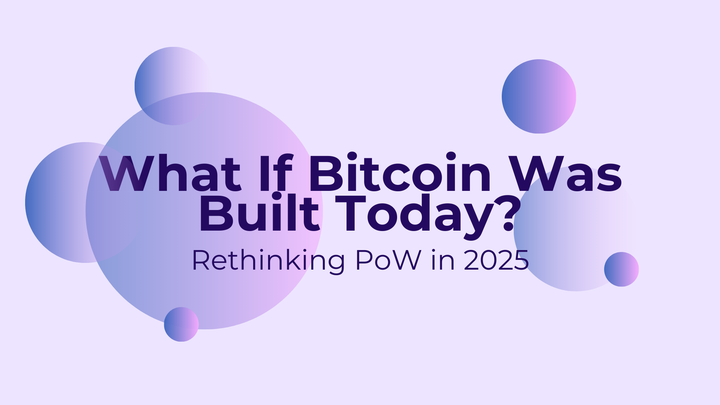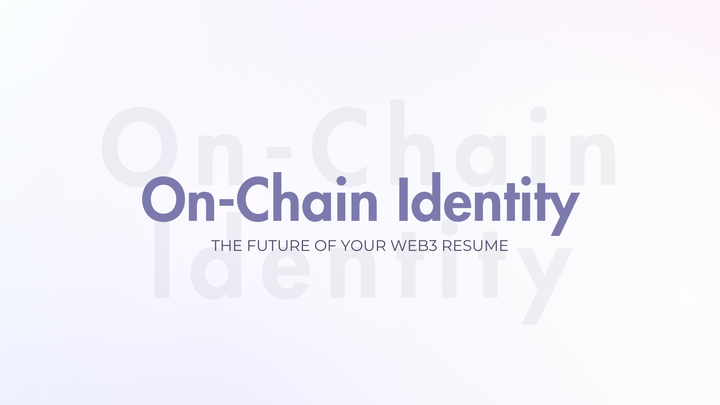The Pros and Cons of Cloning GitHub Repositories for Web3 Projects: A Web3 Developer's Guide

Imagine this: you’re a Web3 developer, excited to build the next big decentralized application (dApp). You stumble upon a promising GitHub repository with ready-to-use smart contracts, wallet integrations, and sleek front-end code or you find a tool specifically made to ease process on a particular product. With a single git clone.
→you could save weeks of development time.
→You could just ease tasks instantly with just running a script.
But then you hear a horror story a developer lost thousands of dollars after cloning a malicious repo that drained their crypto wallet. Suddenly, that tempting shortcut doesn’t seem so safe.
As Web3 continues to reshape industries with decentralized finance (DeFi), non-fungible tokens (NFTs), and blockchain-based solutions, GitHub has become a treasure trove for developers. Open-source repositories offer code for everything from ERC-20 tokens to full-fledged dApps. But with great opportunity comes great risk. Cloning repositories can accelerate your project, but it can also expose you to vulnerabilities that could compromise your funds, data, or reputation.
In this guide, we’ll dive deep into the pros and cons of cloning GitHub repositories for Web3 projects with confirmed solutions. Drawing from real-world examples, technical insights, and best practices, this article is structured to equip you with the knowledge to leverage open-source code safely while avoiding pitfalls like the wallet-draining incident mentioned above. Whether you’re a seasoned blockchain developer or a newcomer to Web3, this guide is your roadmap to navigating the open-source landscape with confidence.
Why GitHub Is a Web3 Developer’s Best Friend (and Potential Foe)
GitHub is the go-to platform for open-source code, hosting millions of repositories that power Web3 innovation. From OpenZeppelin’s battle-tested smart contract libraries to decentralized exchange (DEX) templates, GitHub offers a wealth of resources for Web3 developers. Cloning a repository essentially downloading its code to your local machine can feel like unlocking a cheat code for building dApps, smart contracts, or blockchain integrations.
But here’s the catch: not every repository is created equal. While many are built by reputable developers and organizations, others may harbor malicious code, outdated dependencies, or untested scripts. The decentralized nature of Web3, combined with the high stakes of handling cryptocurrency wallets, makes cloning repositories a double-edged sword. I will break down the benefits and risks of public repo clone below.🔻
The Pros of Cloning GitHub Repositories for Web3 Projects
Cloning a GitHub repository can be a game-changer for Web3 developers. Here are the key advantages, backed by practical examples and insights.
1. Accelerated Development: From Zero to dApp in Record Time
Building a Web3 project from scratch is no small feat. Writing smart contracts, integrating wallet providers like MetaMask, and ensuring compatibility with blockchain networks like Ethereum(EVM) or Cosmos takes time and expertise. Cloning a well-maintained repository can shave weeks or even months off your development timeline.
For example, suppose you’re building a DeFi protocol similar to Uniswap. Instead of coding a swap function from scratch, you could clone magic swaps ERC-20 contract templates, which are audited and widely used. By customizing these templates, you can focus on your project’s unique features rather than reinventing the wheel. This approach is especially valuable for solo developers or small teams with limited resources.
2. Community-Driven Innovation: Tapping into Collective Expertise
Web3 thrives on collaboration, and GitHub is the epicenter of this community-driven ethos. Repositories like Hardhat, Truffle, or Remix are maintained by teams of developers who contribute updates, bug fixes, and new features. Cloning these repositories gives you access to code that has been vetted, tested, and improved by a global community.
Take the case of Chainlink’s decentralized oracle network. Its GitHub repository provides scripts for integrating price feeds into smart contracts. By cloning this repo, you can leverage Chainlink’s robust infrastructure without needing to understand every nuance of oracle implementation. This collective expertise ensures your project benefits from industry-standard solutions.
3. Learning Opportunities: A Crash Course in Web3 Development
For developers new to Web3, cloning repositories is like enrolling in a masterclass. By studying the code of established projects, you can learn how to implement token standards, handle gas optimization, or integrate with decentralized storage like IPFS. Repositories often include documentation, comments, and examples that serve as practical learning tools.
For instance, cloning the repository for Aave’s lending protocol can teach you how to structure a DeFi smart contract. You’ll see real-world implementations of functions like flash loans or collateral management, which can deepen your understanding of blockchain mechanics. This hands-on learning is invaluable for building expertise in a complex field.
4. Cost Efficiency: Building on a Budget
Hiring a team of blockchain developers or auditing custom smart contracts can cost thousands of dollars. Cloning open-source repositories reduces these expenses by providing free, reusable code. For startups or independent developers, this cost efficiency can make the difference between launching a project and shelving it.
Consider a small team building an NFT marketplace. By cloning a repository like OpenSea’s early codebase or using OpenZeppelin’s ERC-721 templates, they can create a functional prototype without breaking the bank. The savings can then be allocated to marketing, user acquisition, or security audits.
5. Customizability: Tailoring Code to Your Vision
Open-source code is rarely a one-size-fits-all solution, but it’s highly customizable. Cloning a repository gives you a foundation to modify according to your project’s needs. Want to add a staking mechanism to an existing DeFi protocol? You can fork the repo, tweak the smart contracts, and deploy your version.
This flexibility is evident in projects like Yearn Finance, where developers have forked the original codebase to create variations with unique features. Cloning allows you to stand on the shoulders of giants while adding your own creative spin.
The Cons and Risks of Cloning GitHub Repositories
While the benefits are compelling, cloning GitHub repositories for Web3 projects comes with significant risks. The story of a developer losing funds to a wallet-draining script is a stark reminder of what can go wrong. Here’s a detailed look at the potential downsides.
1. Security Vulnerabilities: The Hidden Dangers of Malicious Code
The most alarming risk of cloning repositories is the potential for malicious code. Hackers can embed backdoors or scripts that compromise your system, steal private keys, or drain cryptocurrency wallets. This is particularly dangerous in Web3, where wallet integrations are common, and a single vulnerability can lead to catastrophic losses.
For example, in July, 2025, a developer reported losing funds in his Rabby wallet after cloning a seemingly legitimate DeFi repository. The repo contained a script that, when executed, connected to the developer’s MetaMask wallet and initiated unauthorized transactions. Such incidents highlight the need for vigilance when cloning unfamiliar repositories.
2. Lack of Audit: Trusting the Unknown
Unlike proprietary software, many GitHub repositories especially for Web3 projects are not formally audited. Smart contracts, in particular, require rigorous testing to prevent exploits like reentrancy attacks or integer overflows. Cloning an unaudited repo could mean deploying code with hidden bugs that compromise your project’s security.
The 2022 Nomad Bridge hack, where $190 million was stolen due to a vulnerable smart contract, underscores the importance of audits. If you clone a repository without verifying its integrity, you’re essentially gambling with your project’s future.
3. Dependency Risks: The Perils of Outdated Libraries
Web3 projects often rely on external libraries or dependencies, such as Web3.js for Ethereum interactions or ethers.js for wallet management. Cloning a repository with outdated or insecure dependencies can expose your project to known vulnerabilities. For instance, an older version of a library might be susceptible to phishing exploits or gas limit manipulations.
A real-world example is the 2021 Poly Network hack, where attackers exploited a vulnerability in a dependency used by the protocol. Developers who clone repositories without checking dependency versions risk inheriting similar weaknesses.
4. Legal and Licensing Issues: Navigating the Fine Print
Not all open-source code is free to use in every context. GitHub repositories come with licenses like MIT, GPL, or Apache, each with specific terms. Using a repository with a restrictive license (e.g., GPL) for a commercial Web3 project could lead to legal challenges. For example, failing to open-source your derivative code under a GPL license could violate its terms.
Additionally, some repositories may include proprietary code or assets that require permission to use. Cloning without understanding the license could result in costly disputes or project delays.
5. Trust Dependency: The Risk of Blind Faith
Web3 developers often assume that popular repositories with many stars or forks are safe. However, popularity doesn’t guarantee security. Hackers can fork legitimate repositories, insert malicious code, and promote them to unsuspecting developers. Blindly cloning a repository without reviewing its code is a recipe for disaster.
The wallet-draining incident mentioned earlier likely stemmed from such misplaced trust. The developer may have assumed the repository was safe because it had a polished README and several stars, only to discover hidden scripts that compromised their funds.
Real-World Lessons: The Wallet-Draining Nightmare
To illustrate the stakes, let’s revisit the incident that inspired this article. A developer, let’s call them Wisdom,is working on a DeFi project and cloned a GitHub repository containing a smart contract template. The repository appeared legitimate, with a detailed README and sample code for wallet integration. Excited to save time, Wisdom the code locally to test its functionality.
Wisdom's thoughts are:
→The repo is real entity.
→The Readme is detailed.
Quite unknown to Wisdom, the repository included a malicious script that connected to their MetaMask wallet and initiated unauthorized transactions. Within minutes, $5,000 in ETH was siphoned from their wallet to an unknown address. The culprit? A cleverly disguised function that exploited a wallet approval vulnerability, buried deep in the codebase.
This story isn’t unique. Similar incidents have been reported across the Web3 community, highlighting the need for rigorous security practices when cloning repositories. But how can developers avoid becoming the next cautionary tale? 🔻
Best Practices for Web3 Developers: Cloning Safely
Cloning GitHub repositories doesn’t have to be a risky endeavor. By following these best practices, you can reap the benefits of open-source code while minimizing vulnerabilities.
1. Audit the Code: Trust but Verify
Before running any cloned code, audit it thoroughly. For smart contracts, use static analysis tools like Slither or Mythril to detect vulnerabilities such as reentrancy or unchecked external calls. For front-end scripts, check for suspicious API calls or wallet interactions that could compromise security.
Pro Tip: If you’re not comfortable auditing code yourself, hire a professional auditor or use platforms like Certik or Hacken for third-party reviews. Spending a few hundred dollars on an audit could save you thousands in losses.
2. Verify Repository Authenticity: Do Your Due Diligence
Not all repositories are what they seem. Before cloning, verify the repository’s authenticity by checking:
- Ownership: Is the repo maintained by a reputable developer or organization? For example, repositories under OpenZeppelin or ConsenSys are generally trustworthy.
- Activity: Look at the commit history, issues, and pull requests. Active repositories with regular updates are less likely to contain malicious code.
- Community Engagement: Check for discussions in the repository’s issues or on platforms like Discord or Twitter. A lack of community activity could be a red flag.
Example: The OpenZeppelin Contracts repository has thousands of stars, frequent updates, and a dedicated community, making it a safer choice than an obscure repo with minimal activity.
3. Use Trusted Sources: Stick to the Known Players
When possible, clone repositories from well-known Web3 organizations or developers. Some trusted sources include:
- OpenZeppelin: Offers audited smart contract templates for ERC-20, ERC-721, and more.
- ConsenSys: Provides tools like Truffle and Diligence for secure Web3 development.
- Chainlink: Supplies reliable oracle and data feed integrations.
- Uniswap: Shares code for decentralized exchanges and liquidity pools.
These organizations have a vested interest in maintaining secure, high-quality code, reducing the risk of malicious scripts.
4. Test in Isolated Environments: Stay Safe with Sandboxes
Never run cloned code directly on a system connected to your primary wallet or sensitive data. Instead, use isolated environments like:
- Virtual Machines: Set up a virtual machine (e.g., using VirtualBox) to test code without risking your main system.
- Testnets: Deploy smart contracts to Ethereum testnets like Sepolia or Polygon’s Mumbai to observe their behavior.
- Docker Containers: Run scripts in a containerized environment to limit their access to your system.
For example, before integrating a cloned wallet script, test it on the Sepolia testnet with a burner wallet containing no real funds. This approach would have saved Alex from their wallet-draining ordeal.
5. Secure Development Practices: Protect Your Keys and Data
Web3 development involves handling sensitive information like private keys, API keys, and wallet addresses. Follow these practices to stay secure:
- Use Environment Variables: Store sensitive data in
.envfiles and exclude them from version control using.gitignore. - Avoid Hardcoding: Never hardcode private keys or wallet addresses in your code. Use secure libraries like
ethers.jsfor wallet management. - Enable Two-Factor Authentication (2FA): Protect your GitHub account and wallet providers with 2FA to prevent unauthorized access.
Tool Recommendation: Use Hardhat or Foundry for Web3 development. These frameworks include built-in security features and support for testnets, making it easier to test and deploy code safely.
6. Stay Updated: Monitor for Vulnerabilities
Web3 is a fast-moving field, and vulnerabilities can emerge in even the most trusted repositories. Subscribe to security advisories from organizations like OpenZeppelin, Chainlink, or the Ethereum Foundation. Monitor platforms like Twitter or the Ethereum Security Working Group for reports of new exploits.
If you’ve cloned a repository, regularly check for updates or forks that address security issues. Tools like Dependabot can alert you to outdated dependencies in your project.
Case Study: How to Clone Safely in Practice
To bring these best practices to life, let’s walk through a hypothetical scenario. Suppose you’re building an NFT marketplace and want to clone a repository to jumpstart development. Here’s how to do it safely:
- Identify a Trusted Repository: You find OpenZeppelin’s ERC-721 contract repository, which is widely used and audited. It has thousands of stars, regular updates, and a detailed README.
- Verify Authenticity: You check the repository’s commit history and confirm it’s maintained by OpenZeppelin’s official account. Community discussions on GitHub and Twitter show active engagement and no recent security concerns.
- Clone the Repository: You run
git clone https://github.com/the-repo-linkin a Docker container to isolate the code. - Audit the Code: Using Slither, you analyze the ERC-721 contract for vulnerabilities. The audit confirms the code is clean, with no reentrancy or overflow risks.
- Test on a Testnet: You deploy the contract to the Polygon Mumbai testnet using Hardhat, connecting to a burner wallet with no real funds. The contract behaves as expected, minting NFTs without issues.
- Customize and Deploy: You modify the contract to add a royalty feature, test it again on Mumbai, and deploy it to the Polygon mainnet after a professional audit.
By following these steps, you’ve leveraged open-source code to build your marketplace while minimizing risks. This process balances efficiency with security, ensuring your project and your wallet remains safe.
The Bigger Picture: Balancing Efficiency and Security in Web3
The Web3 ecosystem is built on the principles of decentralization, transparency, and collaboration. Open-source repositories on GitHub embody these values, enabling developers to build faster, learn from experts, and contribute to the community. However, the high stakes of blockchain development where a single bug can lead to millions in losses demand a cautious approach.
The wallet-draining incident we discussed is a sobering reminder that convenience comes at a cost. Cloning repositories can accelerate your Web3 project, but it requires diligence to avoid becoming a victim of malicious code. By auditing code, verifying sources, testing in isolated environments, and following secure development practices, you can harness the power of open-source while protecting your funds and reputation.
Call to Action: Embrace Open-Source, but Stay Vigilant
As a Web3 developer, you’re part of a vibrant community pushing the boundaries of what’s possible with blockchain technology. GitHub is your playground, offering endless possibilities to innovate and collaborate. But with great power comes great responsibility. Don’t let the allure of a quick git clone blind you to the risks.
Before you clone your next repository, ask yourself:
- Have I verified the source and its community?
- Have I audited the code or tested it in a safe environment?
- Am I prepared to handle any vulnerabilities or legal issues?
By answering these questions and following the best practices outlined in this guide, you can build Web3 projects that are both innovative and secure. Let’s keep the spirit of open-source alive while ensuring the safety of our wallets, projects, and the broader Web3 ecosystem.
Be alert always because web3 security needs to be prioritized to avoid unnecessary losses.



Comments ()